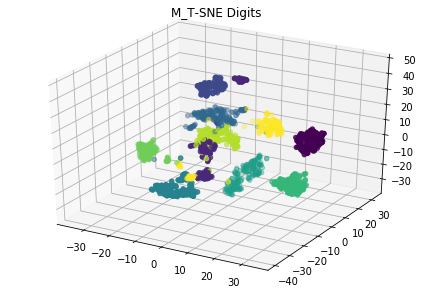上篇记录TSNE的文章中,我说体会到TSNE计算慢,耗时长的问题,那么有没有快速、并行的版本可以拿来使用呢?经过搜索后,我找到了MulticoreTSNE和openTSNE,经过测试之后,目前选择了MulticoreTSNE作为Sklearn中的TSNE替代品。那么接下来就看一下,MulticoreTSNE和Sklearn中TSNE的对比。
踩坑
首先一上来就是踩坑,在安装上使用时,就遇到的坑:
1 | # 未安装Cmake的话需要执行 |
但是,当我去执行代码时遇到报错:
1 | raise RuntimeError('Cannot find/open tsne_multicore shared library') |
在MulticoreTSNE的issues中找到了解决方案: https://github.com/DmitryUlyanov/Multicore-TSNE/issues/32#issuecomment-452848576
卸载之前安装的MulticoreTSNE以后,在Pypi的MulticoreTSNE下载压缩包进行解压,将其中的setup.py文件进行修改:
1 | if 0 != execute(['cmake', |
之后执行
1 | python setup.py install |
另外,此处大概需要VS2017、g++的编译环境(我的电脑之前就有装,从输出看是需要的),接下来,代码就可以正常工作了。
效果对比
对比的标准就是耗时长短了,将之前的代码进行一些修改:
1 | import matplotlib.pyplot as plt |
使用timeit进行基准测试
1 | %timeit s_t_sne(3) |
可以看出,MulticoreTSNE的耗时明显短,图片表现出的效果也能满足需要,就只贴MulticoreTSNE版本的图片好了。

但是,MulticoreTSNE中的某些参数在使用时要注意,文档有提到:
Also note that some parameters are there just for the sake of compatibility with sklearn and are otherwise ignored. See MulticoreTSNE class docstring for more info.
openTSNE
之前提到openTSNE同样支持并行计算,为什么没有使用呢,因为如果使用3维的话,openTSNE会报错:
1 | Interpolation based t-SNE for >2 dimensions is currently unsupported (and generally a bad idea) |
为什么说高于2维是个坏主意,等有时间了解一下是什么原因…